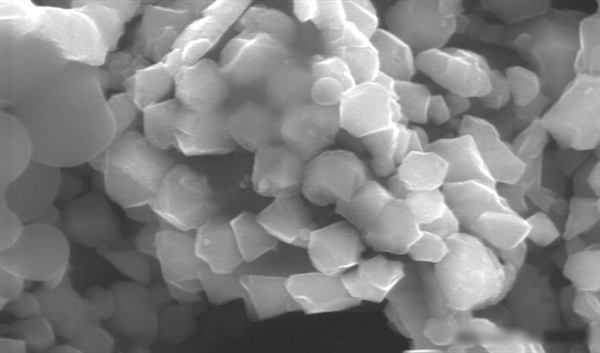 |
Liquid metal "ultra-low temperature" extracted silicon

Electron micrographs of pure silicon crystals extracted from liquid metals
Silicon is the backbone of modern electronics and semiconductor technology. Traditionally, it's extracted from sand through a long, energy-intensive process that involves high temperatures and produces significant environmental waste.
Stephen Maldonado, a professor of chemistry and applied physics at the University of Michigan, explained: “The silicon used in today’s electronic devices is created through a series of energy-heavy chemical reactions at over 2000°F (1350°C), which also releases large amounts of carbon dioxide.â€
Now, Maldonado and his team have developed a groundbreaking method that allows for the extraction of crystalline silicon at just 180°F (82°C)—the same temperature as a baked turkey. This is a major leap forward in terms of efficiency and sustainability.
The technique is surprisingly simple and reminiscent of something you might find in your kitchen. When sugar becomes oversaturated in water, it naturally forms crystals—like rock candy. Maldonado and his team have essentially done the same thing, but with silicon and liquid metal instead of sugar and water.
“We’re not using water,†Maldonado said. “We’re using liquid metal. And we’re not using sugar—we’re using silicon.â€
The process starts by creating a solution containing silicon tetrachloride. Then, an electrode is introduced into a liquid metal bath. The electrons in the metal help convert the silicon tetrachloride into pure silicon, which then separates from the liquid.
According to Maldonado, “Liquid metals are key to this process. While other solid-state technologies can also provide electrons to turn silicon tetrachloride into silicon, only certain liquid metals allow the silicon to crystallize without needing extra heat.â€
Although the current results are small—only 0.5 microns in diameter—researchers believe the method has great potential. They plan to refine the process, possibly using different low-melting alloys, to produce larger silicon crystals and increase the technology’s practical value.
If successful, this could revolutionize industries like solar energy, where high-purity silicon is essential but expensive to produce. Maldonado acknowledges that it's too early to say how much cost could be reduced, but he believes the process could be flexible, cheap, and eco-friendly.
“Our ultimate goal is to turn sand into crystalline silicon in one step,†he said. “It may sound impossible now, but I think it’s within reach.â€
The University of Michigan is currently seeking patent protection for the technology and is looking for business partners to help bring it to market. Who knows? Maybe one day, even your computer’s CPU could be made using this revolutionary method.
53Cm Nonwoven Wallpaper,Home Decor Nonwoven Wallpaper,European Retro Wallpaper,Waterproof Non-Woven Wallpaper
JIANGSU ARTSTYLE DECORATION MATERIALS CO..LTD , https://www.artstyledecor.com